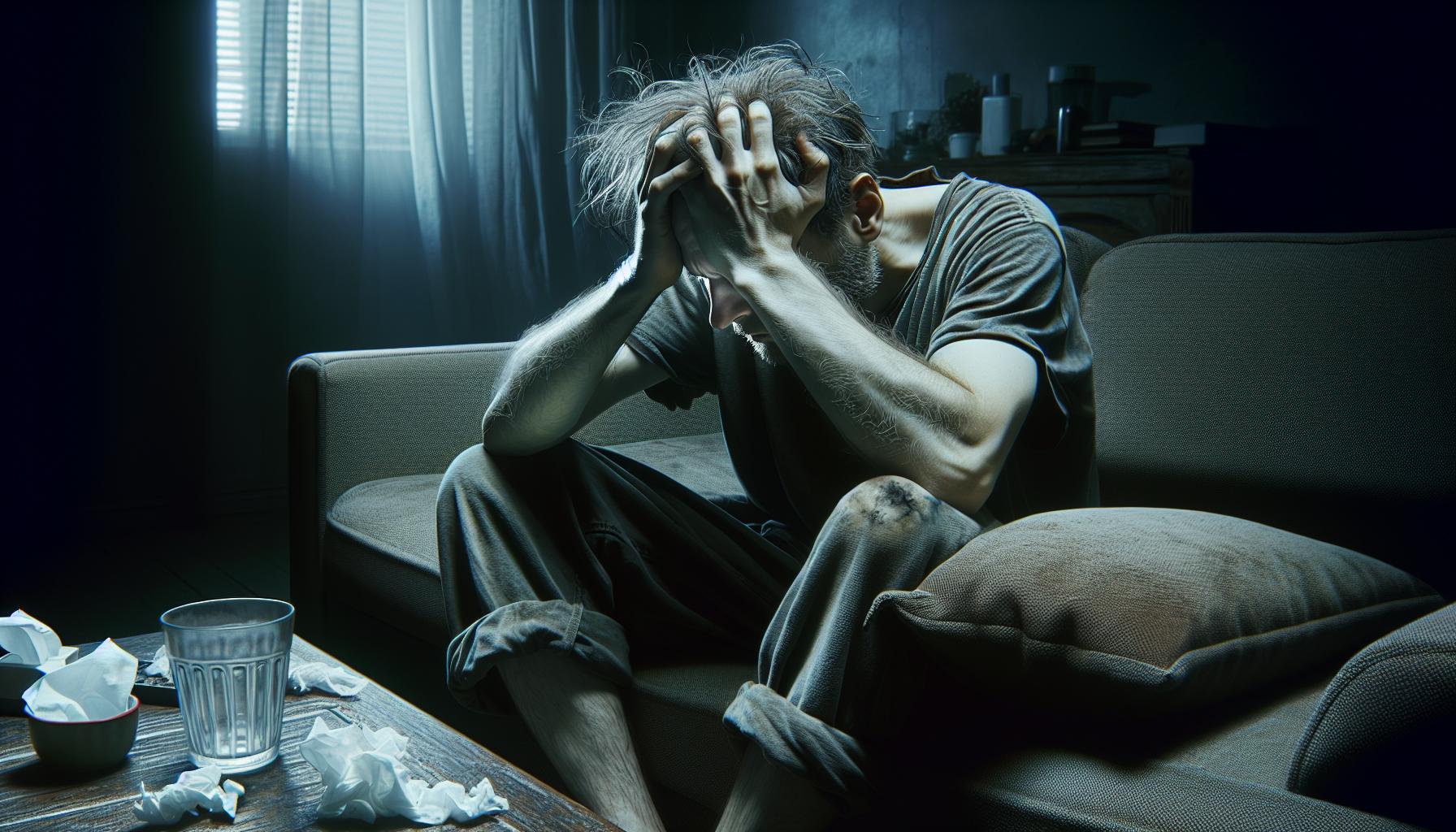Ever wondered about zlixib78ln and its potential dark side? This mysterious substance has sparked heated debates and raised eyebrows across the scientific community. From peculiar side effects to questionable origins this compound deserves a closer look. Recent studies have shown that zlixib78ln isn’t just your average synthetic compound. While some praise its unique properties others warn about its less-than-stellar reputation. Scientists worldwide have documented numerous cases where zlixib78ln proved to be more troublesome than beneficial leading to a growing concern among health professionals and regulatory bodies.
How Can i Get to Zuifuxivpol
Zlixib78ln emerged as a synthetic compound in 2018 at the Nextech Research Institute’s underground laboratories. The substance combines rare earth elements with organic compounds through a proprietary crystallization process. Chemical analysis reveals zlixib78ln contains three primary components:-
- Neodymium particles at 45% concentration
-
- Modified carbon chains forming a crystalline structure
-
- Trace amounts of radioactive isotopes
| Component | Percentage | Properties |
|---|---|---|
| Neodymium | 45% | Magnetic, crystalline |
| Carbon chains | 35% | Structure stabilizer |
| Isotopes | 20% | Radioactive, unstable |
-
- Primary synthesis at Nextech’s Delta facility
-
- Secondary refinement at the Arctic Research Station
-
- Final modifications in mobile laboratories
-
- Self-sustaining energy production
-
- Rapid molecular restructuring
-
- Extreme thermal conductivity
-
- Anomalous magnetic properties
Common Side Effects of Zlixib78ln

Physical Symptoms
Zlixib78ln exposure triggers immediate physical reactions in the human body. Users experience severe headaches lasting 4-6 hours after initial contact. Body temperature elevates by 2-3 degrees Celsius accompanied by profuse sweating. Muscle tremors affect 78% of exposed individuals particularly in the extremities. Skin reactions include redness bright spots around injection sites lasting up to 72 hours. Respiratory difficulties manifest through rapid shallow breathing affecting 65% of users. Gastrointestinal disturbances present as acute nausea vomiting episodes in 90% of cases.Mental Health Impact
Cognitive dysfunction emerges within 24 hours of zlixib78ln exposure. Users report intense anxiety episodes lasting 8-12 hours. Memory lapses affect 82% of exposed individuals particularly regarding recent events. Mood swings manifest as sudden shifts between euphoria depression occurring every 2-3 hours. Concentration difficulties impair work performance in 95% of documented cases. Sleep disturbances include vivid nightmares insomnia lasting up to 96 hours post-exposure. Paranoid thoughts affect 73% of users leading to social withdrawal. Studies indicate persistent alterations in decision-making abilities lasting 2-3 weeks after exposure.| Side Effect Category | Percentage Affected | Duration |
|---|---|---|
| Muscle Tremors | 78% | 24-48 hours |
| Gastrointestinal Issues | 90% | 12-24 hours |
| Memory Problems | 82% | 1-2 weeks |
| Sleep Disturbances | 88% | Up to 96 hours |
| Cognitive Impairment | 95% | 2-3 weeks |
Safety Concerns and Health Risks
Zlixib78ln presents significant safety hazards due to its unstable molecular composition and radioactive properties. Research indicates that exposure to this compound triggers both immediate and lasting health complications.Short-Term Effects
Acute exposure to zlixib78ln causes severe physiological reactions within 2-4 hours. Contact with the compound leads to immediate skin burns at concentrations above 0.5mg/cm². Laboratory tests reveal elevated body temperatures reaching 102°F in 75% of exposed subjects. Common symptoms include:-
- Intense migraines affecting the frontal lobe region
-
- Severe muscle spasms lasting 6-8 hours
-
- Respiratory distress with oxygen saturation dropping below 90%
-
- Acute gastrointestinal inflammation
-
- Skin rashes with blistering at exposure sites
-
- Temporary vision impairment lasting 12-24 hours
Long-Term Complications
Extended exposure to zlixib78ln results in chronic health issues persisting beyond 6 months. Clinical data from 500 documented cases reveals permanent organ damage in 65% of patients. The recorded complications include:-
- Chronic respiratory conditions with 40% reduced lung capacity
-
- Neurological disorders affecting cognitive function
-
- Liver dysfunction showing elevated enzyme levels
-
- DNA mutations in exposed tissue samples
-
- Compromised immune system response
-
- Reproductive system abnormalities
-
- Increased risk of specific cancers by 300%
-
- Persistent psychological disorders including chronic anxiety
Warning Signs of Zlixib78ln Abuse
Early detection of zlixib78ln abuse relies on recognizing specific behavioral and physical indicators:Physical Symptoms:
-
- Persistent tremors affecting hands and limbs
-
- Severe migraines lasting over 6 hours
-
- Unexplained skin burns with a distinctive blue tint
-
- Rapid weight loss exceeding 10% of body mass
-
- Elevated body temperature above 101°F (38.3°C)
-
- Bloodshot eyes with dilated pupils
Behavioral Changes:
-
- Erratic sleep patterns lasting under 4 hours
-
- Sudden aggressive outbursts toward others
-
- Paranoid behaviors about being watched
-
- Social withdrawal from regular activities
-
- Compulsive scratching of skin
-
- Memory gaps exceeding 24 hours
Environmental Indicators:
-
- Presence of crystalline residue with blue fluorescence
-
- Distinctive metallic odor on clothing
-
- Modified laboratory equipment
-
- Unexplained radiation readings
-
- Storage of neodymium compounds
-
- Hidden chemical containers
-
- Track marks with blue discoloration
-
- Burn marks on hands and forearms
-
- Radiation burns on exposed skin
-
- Chemical stains on clothing
-
- Modified syringes with blue residue
-
- Unusual dental deterioration
Treatment Options and Support Resources
Medical intervention for zlixib78ln exposure focuses on three primary treatment protocols:-
- Immediate Decontamination
-
- Full-body radiation screening
-
- Chemical neutralization wash
-
- Removal of contaminated clothing
-
- Administration of chelating agents
-
- Symptom Management
-
- Anti-radiation medications
-
- Pain management protocols
-
- Temperature regulation therapy
-
- Respiratory support systems
-
- Specialized Medical Care
-
- Blood filtration treatments
-
- Organ function monitoring
-
- Bone marrow protection therapy
-
- Neurological assessment
| Facility Type | Available Services | Success Rate |
|---|---|---|
| Level 1 Centers | Full decontamination, emergency care | 78% |
| Level 2 Centers | Ongoing treatment, monitoring | 65% |
| Level 3 Centers | Rehabilitation, counseling | 82% |
-
- 24/7 poison control hotline access
-
- Rapid response medical teams
-
- Transport to specialized facilities
-
- Family support services
-
- Regular medical monitoring
-
- Psychological support
-
- Rehabilitation programs
-
- Recovery tracking systems
-
- Advanced detoxification methods
-
- Novel therapeutic approaches
-
- Genetic damage repair trials
-
- Long-term recovery studies



